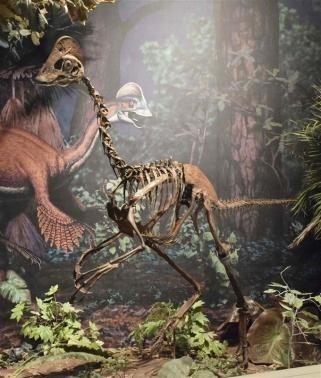
A new species of horned dinosaur has been uncovered by scientists, who collected the fossil remains from Montana in the United States and Alberta, Canada. The giant creature named Mercuriceratops Gemini, is around six meters (20 feet) long and weighed over two tons. The dinosaur lived around 77 million years ago during the late Cretaceous period according to researchers.
The dinosaur had a wing-like shaped head with a parrot-like beak. It is also believed that the creature had two long brow horns above its eyes and belonged to a group of plant-eating dinosaurs.
"Mercuriceratops took a unique evolutionary path that shaped the large frill on the back of its skull into protruding wings like the decorative fins on classic 1950s cars. It definitively would have stood out from the herd during the Late Cretaceous," Science Daily quoted lead author Michael Ryan, curator of vertebrate paleontology at The Cleveland Museum of Natural History.
The North American horned dinosaurs used their long skull ornamentation to spot each other and attract mates apart from protecting itself from predators. The wing-like extensions on the sides of its frill may have offered male Mercuriceratops a competitive advantage in attracting mates, explained Ryan.
The butterfly-like frill or neck guard of Mercuriceratops is what makes it a rare species. It is belived that the evolution of Mercuriceratops was responsible for the greater variation in horned dinosaur headgear than previously thought, explained co-author David Evans, curator of vertebrate palaeontology at the Royal Ontario Museum.
The new dinosaur skull fragments were collected from two specimens from the Judith River Formation of Montana and the Dinosaur Park Formation of Alberta. The dinosaur fossil from Alberta was collected by Susan Owen-Kagen, a preparator in the laboratory of Philip Currie at the University of Alberta.
"Susan showed me her specimen during one of my trips to Alberta. I instantly recognized it as being from the same type of dinosaur that the Royal Ontario Museum had from Montana." said Ryan.
"This discovery of a previously unknown species in relatively well-studied rocks underscores that we still have many more new species of dinosaurs to left to find," said co-author of the study, Mark Loewen, research associate at the Natural History Museum of Utah.
The findings of dinosaur fragments were part of Ryan and Evans's new project, the Southern Alberta Dinosaur. The project is designed to understand and study the evolution of late Cretaceous dinosaurs. The project also focuses on the paleontology of some of prehistoric dinosaur-bearing rocks in Alberta and the closely located rocks of northern Montana.
The details of the findings have been published online in the journal Naturwissenschaften.

















